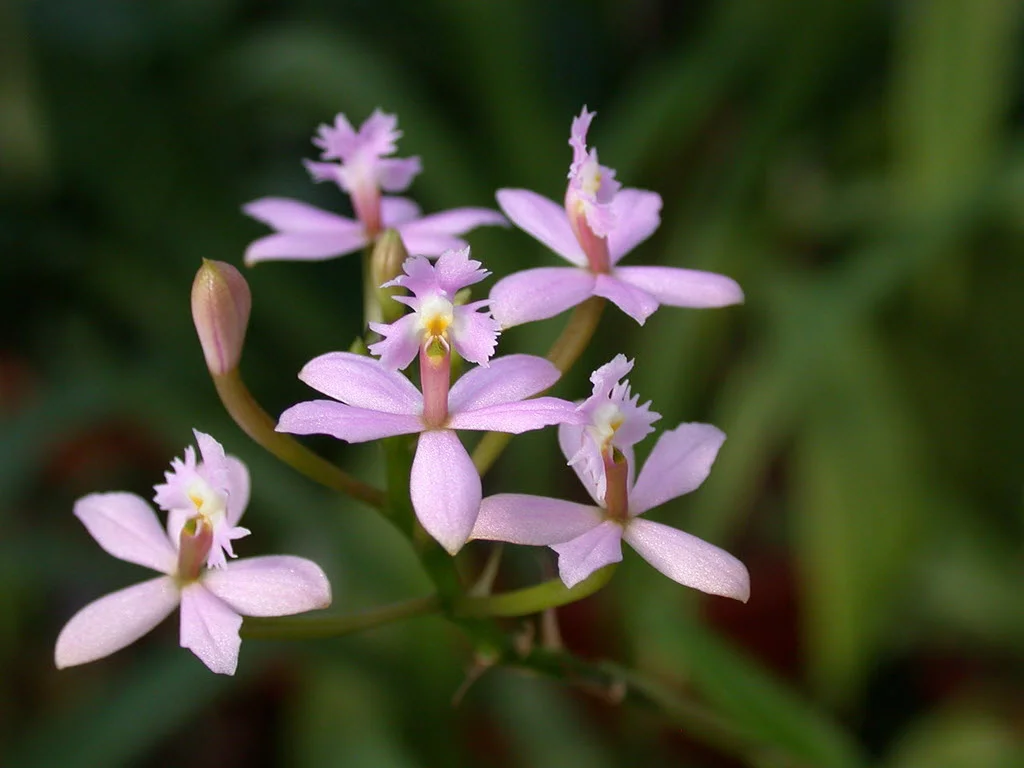Table of Contents
Pronunciation: plee-OH-nee
Other Names: Peacock Orchid
Introduction
Pleiones have a sympodial growth habit that is unusual for orchids. The spongy pseudobulbs only last for one growth season, and then they drop off and go dormant until a new pseudobulb begins to form.
Pleione Forrestii
Commonly referred to as 'windowsill plants' for their easy growth patterns, these miniature orchids do very well in cooler temperatures, and they prefer to spend their dormant period in the refrigerator. This jumpstarts the new growth cycle in the spring.
These plants have larger showy flowers that come in soft pinks, white, lavender, and yellow.
Temperature
Pleiones can't tolerate excessive heat, and they prefer to have cooler temperatures year-round. During the daytime in the summer months, the temperatures should stay between 70°F and 75°F (21°C and 24°C) and no higher. The nighttime hours can cool down to between 55°F and 60°F (13°C to 16°C) without a problem.
They do like cooler winter temperatures when they go dormant around October, and you want your temperatures to stay below 40°F (4°C) continuously until mid-March to start a new growth cycle. If your winter temperatures don't go this low, refrigeration works well.
Light
They like bright but indirect sunlight to grow the best. If you're planting them outside, look for an area where they'll have dappled shade throughout most of the day.
If you're planting them indoors, they do very well on windowsills where they can get the bright morning sunlight. They don't do very well in direct sunlight, and they can get sunburn on their leaves easily.
Water and Humidity
In their natural habitat, Pleiones get monsoon weather in the summer months, so it's a good idea to not let them dry out too much. Depending on your heat and humidity levels, you can water them every other day in the morning hours. You want to soak them through and adjust as your temperature rises or falls.
During their dormant period, you can suspend your watering because if you water them when they're not actively growing, root rot will develop and your plant will die. Your humidity levels can fluctuate between 40% and 70% as long as your orchids aren't in an arid environment. The closer to 70% humidity you can make it, the better it is for your plant.
Feeding
From around mid-March until your orchid starts to go dormant at the end of September or the start or October, you want to feed your plant once a month with a well-balanced fertilizer. If it's possible, it should have a 1:1:1 general purpose ratio to ensure your plant gets everything it needs.
From the end of September or the start of October until mid-March, you can stop fertilizing your plant. It won't need it until it starts a new growth cycle in the spring.
Potting
These plants do very well outdoors and in pots. You want to plant them with your orchid's pseudobulb partially sticking out of your growing medium. You can experiment and see if it likes to be completely buried, but most like at least a small part left above the soil.
You don't want to use only soil as this is far too dense for your plant and it needs to be able to breathe. You can mix one part potting soil with one part sphagnum moss and one part fine grade fir bark. This mix will retain water, but it's light enough so the plant's roots can get good airflow.
Video
Brad from Brad's Greenhouse shows off his Pleione tongariro. These vivid pinkish purple flowers are just the right mix of hardy and exotic. As usual, Brad does a great job of talking about orchid care.
Windowsill orchids are best for beginner gardeners who live in apartments or condominium units without proper gardens. Discover more orchid varieties in our comprehensive list.
More Orchid Culture Sheets











